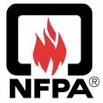

(c) Copyright July 09
“False Alarms and Unwanted Activations”
U.S. EXPERIENCE WITH SMOKE ALARMS
AND OTHER FIRE DETECTIONAL/ALARM EQUIPMENT
Marty Ahrens, Fire Analysis and Research Division, National Fire Protection Association
-
-
•Ionization devices had a disproportionate share of nuisance alarms.
-
•Cooking smoke tends to contain more of the smaller particles (less than one micron) that activate an ionization-type device rather than the larger particles that activate a photoelectric-type device. In the National Smoke Detector Project, 97% of the devices tested for involvement in nuisance alarms were ionization-type devices.
-
•Most people do not automatically assume a sounding smoke alarm is an emergency situation. In some cases, they know what caused the alarm and know that they are safe. However, lives have been lost when real alarms were mistakenly considered false.
Unwanted activations can generate a dangerous sense of complacency.
-

This NFPA report states that 97% of nuisance alarms were caused by ionization detectors.



